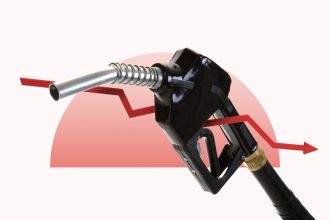Key takeaways
- Including a cosigner on your auto loan is a great way to receive approval and possibly lower your interest rate.
- When your credit score improves, you have the option to remove the cosigner from your loan.
- A cosigner can be removed by refinancing your auto loan, receiving a cosigner release or paying off the loan.
- Before removing the cosigner, ensure your credit score is high enough to receive the same or comparable interest rate if you refinance.
When your credit score is less than perfect, or you’ve just begun building a credit profile, having a cosigner can help you get a car loan. But if your circumstances change over time or your credit score improves, you may want to remove the cosigner from your loan.
If that’s the case, there are three primary options: You can refinance, get a cosigner release or pay off the loan. Understanding each of the options can help you identify the best choice.
Reasons to remove a cosigner from a car loan
There are a few reasons why you would remove a cosigner from your auto loan, such as:
- Improved credit: Your credit score improves as you make timely payments on your car loan. After a few years, it can reach the point where you’re around the same credit score as your cosigner, thus nullifying their reason for being on the loan. Remember that you’ll want to check with your lender beforehand to ensure you’ll receive the same interest rate as your current loan.
- Relationship change: Perhaps you had a spouse or significant other cosign the loan. Over time, your relationship status changed, and now you want them off the loan.
- Protecting their credit: If you experience financial hardship, you might miss a car payment. Missed payments show up on your credit history as well as your cosigners. That’s why it’s important to be proactive if this happens. That way it doesn’t impact their credit. Another reason to remove them is because the debt affects their credit score. Your auto loan impacts their debt-to-income ratio. Removing them from the loan can lower this ratio, making them a better candidate when they want to apply for credit.
Options for removing a cosigner
Having a cosigner on an auto loan is a great way to get approved by lenders if your credit score is less than ideal because it gives your lender added assurance that you will pay off the loan. However, those with added financial responsibility alongside the main borrower may want to exit for various reasons.
Refinance
One way to remove a cosigner is to refinance your auto loan. You’ll need to take out an entirely new loan, possibly with a different lender. When you do this, the old agreement is closed, and you start from scratch with a new loan that won’t be attached to the cosigner anymore.
If you have good to excellent credit, refinancing can also be an opportunity to lower the interest rate on your car loan or even the monthly payment by extending the loan term. A credit score in the 700 range is often required to secure the most competitive loan rates, but it’s possible to get approved for a loan with a lower credit score.
In addition to solid credit, you will also need to have been making your monthly payments on time in order to gain approval for a refinance. If you decide to proceed with refinancing, it’s important to be prepared for potential fees. A new loan provider may charge an application fee, while your current lender may charge an early termination fee.
The timeline for processing an auto loan refinance varies by lender but can take anywhere from a few hours to a few weeks.
Seek a cosigner release
To get a cosigner release, you will first need to contact your lender. After contacting them, you can request the release if the lender offers it. This is just paperwork that removes the cosigner from the loan and places you, the primary borrower, as the sole borrower on the loan.
In order to apply for a cosigner release, a lender may require that you provide proof of income, including pay stubs and bank statements and will also review your credit profile. Lenders want to ensure that you can handle the loan on your own.
One of the drawbacks of a cosigner release is that your initial loan term and interest rate may be impacted. This is especially true if your approval was dependent on your cosigner’s good credit. If the cosigner is released from the loan, your lender may adjust your current terms.
You will also have to show a history of timely payments before the lender agrees to release the cosigner, typically at least 12-24 months. It’s also important to note that not all loans include a cosigner release option, so it’s wise to look into this prior to agreeing to a loan.
Pay off the car loan
The most painless way to remove a cosigner is to pay off the car loan. This will rid both the primary borrower and the cosigner of responsibilities for the loan. Loan payoff can be accomplished in many ways, including using personal savings or applying for a new personal loan.
Paying off a car loan typically involves repaying the current loan balance along with the payoff amount. You will have to contact your lender for the specific repayment methods, especially if the payoff timeline is earlier than initially agreed upon.
Some lenders may charge an auto loan prepayment penalty when you end a loan ahead of schedule. This fee is often about 2 percent of the remaining loan balance, making it important to weigh the cost of the prepayment penalty against the amount you stand to save by refinancing. Be sure to crunch the numbers and determine which option is most cost-effective.
You can also try to negotiate with the lender to avoid or minimize the prepayment penalty on your existing loan. Some of the best practices for negotiating with a lender include preparing how you will present your case to the lender in advance and always being polite in your negotiation attempts.
The process of repaying an auto loan early may also cause your credit score to decline temporarily. This is because having a mix of credit types on your credit profile helps improve your credit score. And when you eliminate an installment account like a car loan, you’re reducing the variety of credit lines you have open. However, the impact on your credit score is typically very short-lived.
Does removing a cosigner impact your credit score?
It depends on your credit history. If you’ve worked hard to improve your credit score to the point you can standalone on the loan and receive the same or a comparable interest rate, then the impact it will have is minimal. If you plan to refinance, you might experience a slight dip in your credit score due to the hard inquiry by the new lender.
However, if you still have a lower credit score when trying to remove the cosigner, it might place you on the hook for a car loan with a higher interest rate. This won’t hurt your credit on its own, but with a higher interest rate, you’ll have larger monthly payments.
If your budget is tight, this could create a situation where you’re more likely to miss or be late on a payment. Therefore, make sure to take a thorough and honest look at your finances before deciding whether to remove the cosigner.
Options if you co-borrowed a car loan
A co-borrower holds equal responsibility with the other borrower for a vehicle loan. If you’d like to remove yourself from this financial obligation, there are various options, including:
- Pay off the loan: If you have the money available, you can contact the lender and pay the agreed-upon amount.
- Sell the vehicle: When you sell the vehicle, you and the other borrower are completely removed from the loan.
- Refinance the vehicle: By refinancing the original loan used to purchase the vehicle, the co-borrower can have an entirely new loan and you can remove yourself from being involved.
How to get a car out of your name if the other person isn’t cooperating
Any potential solutions rely on you and your cosigner or co-borrower communicating and agreeing on what to do. But that may be impossible if you need to exit a loan because of a relationship breakdown or another challenging situation. However, a legal agreement like cosigning or co-borrowing a loan doesn’t end when a relationship does.
If you are going through a divorce, make sure to consult your divorce lawyer about handling the auto loan. Your separation agreement can lay out a course of action, along with consequences if one party or the other doesn’t stick to the agreement you reached.
It can also be helpful to examine the vehicle title to determine the best course of action. If the loan is joint, it will say “or” or “and/or.” These small conjunctions give you the power to sign as the owner of the vehicle.
Bottom line
The removal of a cosigner can be time-consuming, so it’s best to think before agreeing to a cosigned loan. You should only go ahead with a removal in very specific circumstances.
If you decide to remove a cosigner, research the options to identify which approach makes the most sense. If you’re considering refinancing or obtaining a cosigner release, review your credit score and payment history to make sure you can qualify for a loan on your own.
Read the full article here
















